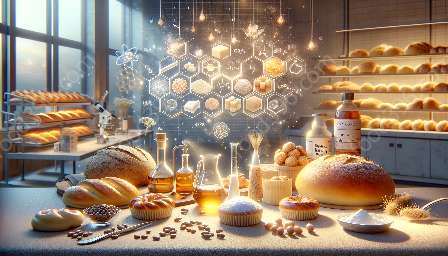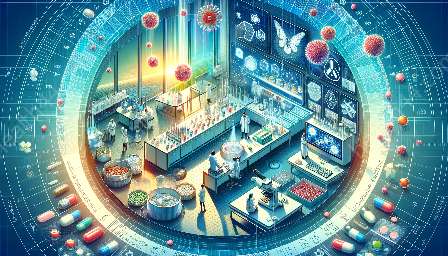Bread, pastries, and other baked goods are staple foods enjoyed worldwide. Behind their delectable flavors and textures lie the intricate processes of chemical reactions in dough. These reactions, in conjunction with leavening agents and baking science, play a profound role in the creation of the perfect loaf of bread or the flakiest pastry. In order to understand this topic comprehensively, let's delve into the key aspects that make up this fascinating subject.
Leavening Agents and Chemical Reactions
Leavening agents are essential components in baking, serving as the catalysts for the chemical reactions that occur in dough. These agents come in various forms, including yeast, baking powder, and baking soda. Each leavening agent plays a distinct role in the process of dough preparation and baking, contributing to the overall texture, flavor, and appearance of the final product.
Yeast
Yeast is a living organism that reacts with sugars in the dough to produce carbon dioxide gas through the process of fermentation. This gas creates pockets of air within the dough, causing it to rise and expand. Furthermore, the activity of yeast imparts nuanced flavors and aromas to the baked goods, enhancing their overall palatability.
Baking Powder and Baking Soda
Baking powder and baking soda are chemical leavening agents that release carbon dioxide gas when they react with moisture and acidic or basic ingredients in the dough. This gas formation facilitates the expansion of the dough, resulting in a light and airy texture in the final baked product. Understanding the precise chemical reactions involved with these leavening agents is crucial for achieving optimal results in baking.
Baking Science & Technology
Baking is a science that involves precise measurements, understanding the properties of ingredients, and leveraging technology to create the perfect dough. Factors such as temperature, humidity, and mixing techniques all influence the chemical reactions that take place during the dough preparation and baking process. Achieving mastery in baking science requires a deep understanding of these factors and their impact on the chemical reactions in dough.
Dough Rising
Dough rising, also known as fermentation, is a crucial stage in the baking process. The chemical reactions occurring during this phase, driven by the action of leavening agents, result in the production of carbon dioxide gas, which causes the dough to visibly expand. This expansion is the direct consequence of the interplay between the yeast, sugars, and other components within the dough. Temperature and time play critical roles in regulating the speed and extent of dough rising, ultimately shaping the final texture and structure of the baked goods.
Impact on the Final Product
The chemical reactions in dough, in collaboration with leavening agents and baking science, significantly influence the characteristics of the final product. From the crumb structure to the flavor profile, every aspect of the baked goods is intricately linked to the underlying chemical processes. By grasping the fundamentals of these reactions, bakers can fine-tune their recipes and techniques to achieve the desired results consistently.
Conclusion
The realm of chemical reactions in dough is a captivating blend of science and artistry. From understanding the intricate workings of leavening agents to mastering the principles of baking science, delving into this subject unveils the magic behind the creation of delectable breads and pastries. This knowledge equips bakers with the tools to experiment, innovate, and ultimately, delight the senses of those who savor their creations.


